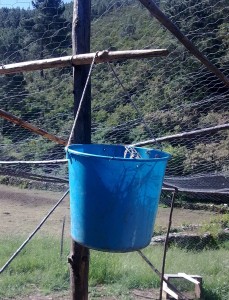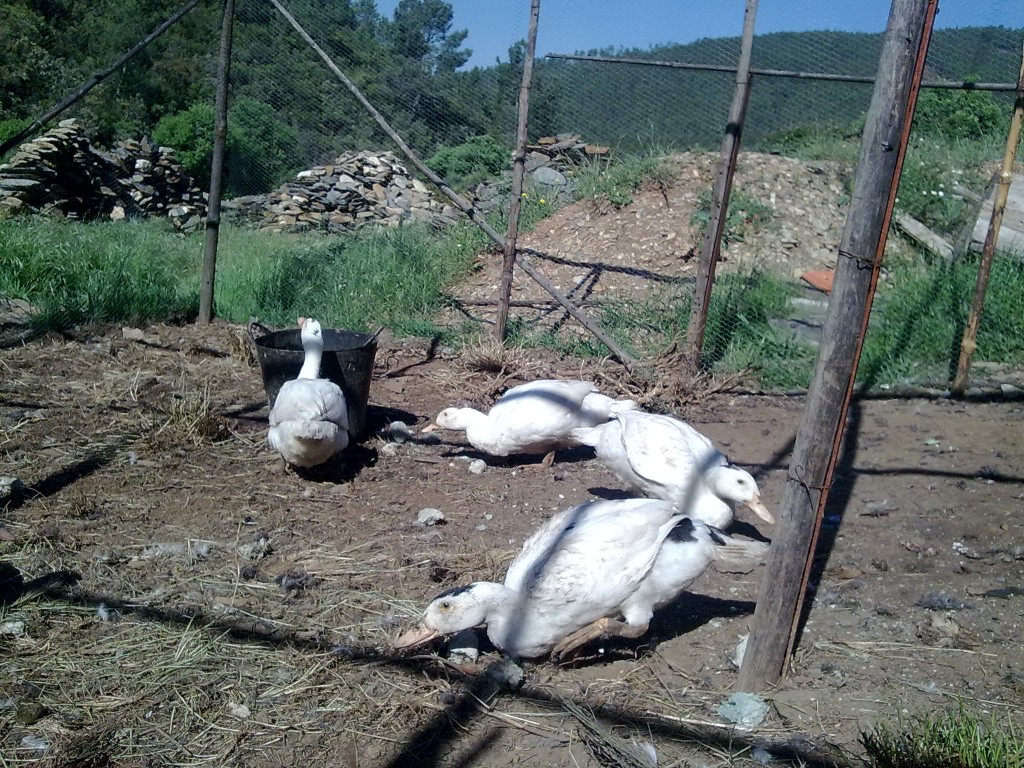This is my attempt to provide additional protein for the poultry, giving them a better diet whilst reducing my feed bill. Stop reading now if you’re of a delicate disposition, but before you dismiss maggot breeding as feed just consider that it’s a free product produced out of something that would be otherwise wasted.
Until I kept chickens, I had no idea how carnivorous they actually are. The occasional dead rat I threw them sent them into a feeding frenzy and it would be pretty much ripped apart before it hit the ground. The ducks are a little more reserved, but will go after insects with their necks low to the ground ready to hoover them up. Very effectively too!
We have a steady stream of meat products which for one reason or another are waste and would previously have been composted, burnt or chucked to the chickens. Cooked chicken, fish and rabbit bones can’t go to the dogs for fear of them shattering, then there’s the leftovers when I butcher something (skin, feet, innards etc) or any small unexplained deaths in the animal shed. We lose a fair number of baby rabbits for instance, plus rats who manage to drown themselves in the goats’ water bucket or who come within my range. All of these things now go into what has become tastefully known as my ‘dead things bucket’ which hangs out of chicken reach in the far side of the poultry run. Innocent looking, you’d never guess ….. 
There are a series of holes drilled around the bottom edge of the bucket, there’s a few sticks in the bottom to avoid the holes becoming blocked, the dead stuff goes on top of those then the contents are covered with a thick layer of straw. The straw acts as ‘soak’ in the same way as sawdust works in a compost toilet, to contain any smell. As you can imagine, the dead stuff attracts flies. Those that survive the attentions of the hoovering ducks lay their eggs in the bucket contents. Once the fly eggs hatch, there’s a stack of maggots which provide free protein for the poultry.
Of course, getting the maggots to the poultry is key to the system working. And needless to say, this is where I’m still struggling. The idea is that the maggots conveniently fall through the holes in the bottom of the buckets and into the beaks of the birds waiting below. But why would a maggot let go of it’s food source and conveniently fall through a hole? Shaking the bucket dislodges a fair few and gets the birds very excited, but the most effective way of getting the maggots to the birds seems to be simply upturning the bucket and letting them take them straight from source. This has the obvious disadvantage of stinking like, well, like rotting carcasses, but thankfully I seem to have been blessed with a not too keen sense of smell (maybe proximity to the goats has rendered me immune to bad smells? 😉 ). Far more unpleasant is having to get the scraps back in the bucket again for another round. Yeuch! It needs to be done fairly regularly, as my big fear is that maggots not consumed quickly enough will develop into flies. A waste of protein! Eventually scraps which will no longer support maggots get burnt. If I put them in the compost they just attract the dogs which make a hell of a mess, get stinky then think they can lie on my bed.
If anyone has any bright ideas for parting the maggots from their food source without my having to get quite so close up and personal I’d be very pleased to hear. Perhaps some sort of spinning thing would do the trick? I had in mind a sort of large scale salad spinner, but have visions of firing maggots off all over the place! Perhaps something along the lines of the rotating composters might avoid that problem. I’ll keep at it, and report back ….


Leave a Reply